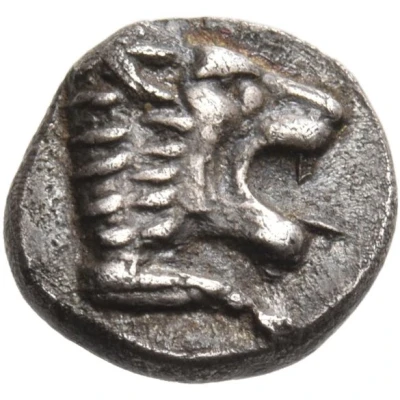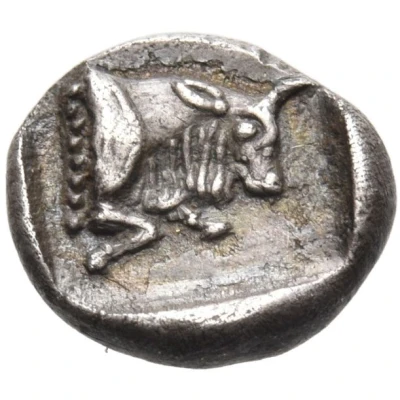


© Nomos AG
Obol 480 BC - 450 BC
| Silver | 0.91 g | 9.5 mm |
| Issuer | Chersonesos (Caria) |
|---|---|
| Type | Standard circulation coin |
| Years | 480 BC - 450 BC |
| Value | Obol (⅙) |
| Currency | Aeginetic drachm |
| Composition | Silver |
| Weight | 0.91 g |
| Diameter | 9.5 mm |
| Shape | Round (irregular) |
| Technique | Hammered, Incuse |
| Orientation | Variable alignment ↺ |
| Demonetized | Yes |
| Updated | 2024-10-09 |
| Numista | N#435781 |
|---|---|
| Rarity index | 100% |
Reverse
Forepart of bull right in square incuse.
Comment
Cahn 1970, X26.
Interesting fact
The Obol coin was used as a form of currency in ancient Greece, specifically in the city-state of Chersonesos (Caria) during the 5th century BC. The coin features an image of a dolphin on one side and a quadriga (a chariot pulled by four horses) on the other. The use of dolphins on coins was a common motif in ancient Greece, as dolphins were considered sacred animals and associated with the sea god Poseidon. The quadriga, on the other hand, represented the power and prestige of the city-state. The Obol coin was made of silver and weighed approximately 0.91 grams, making it a valuable and highly sought-after form of currency during its time.